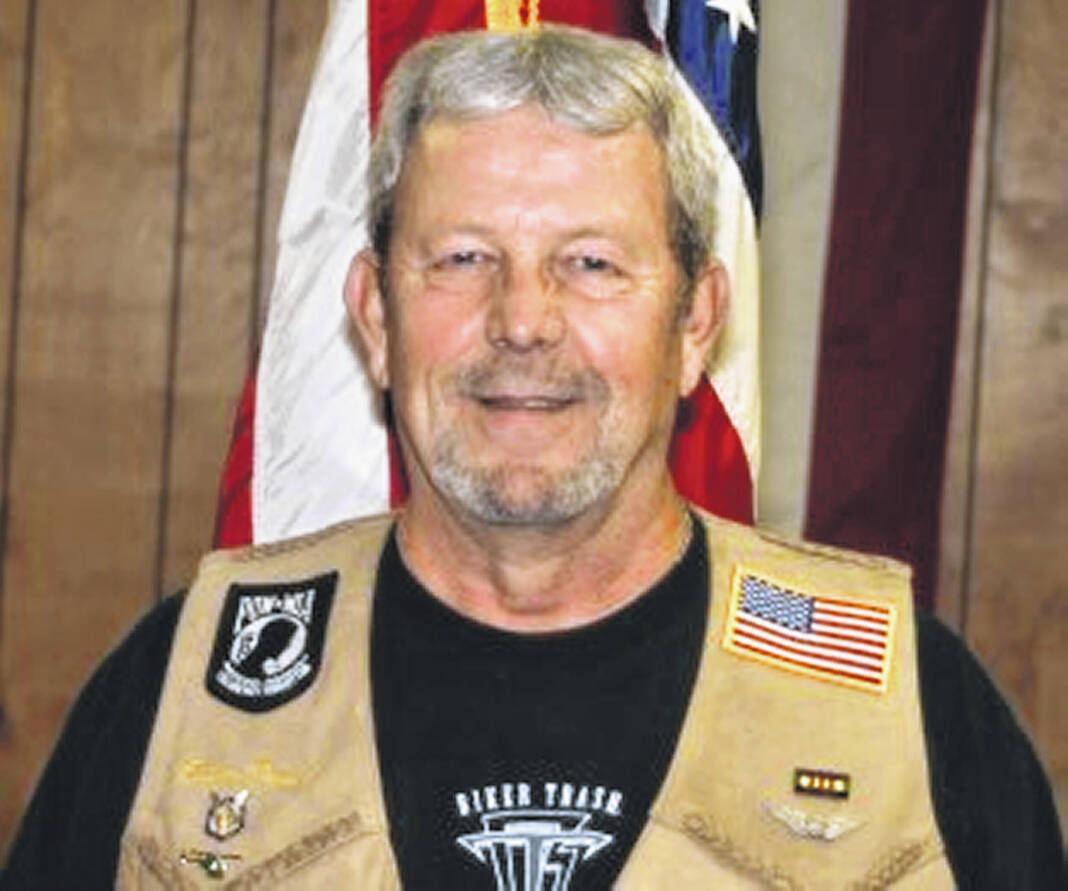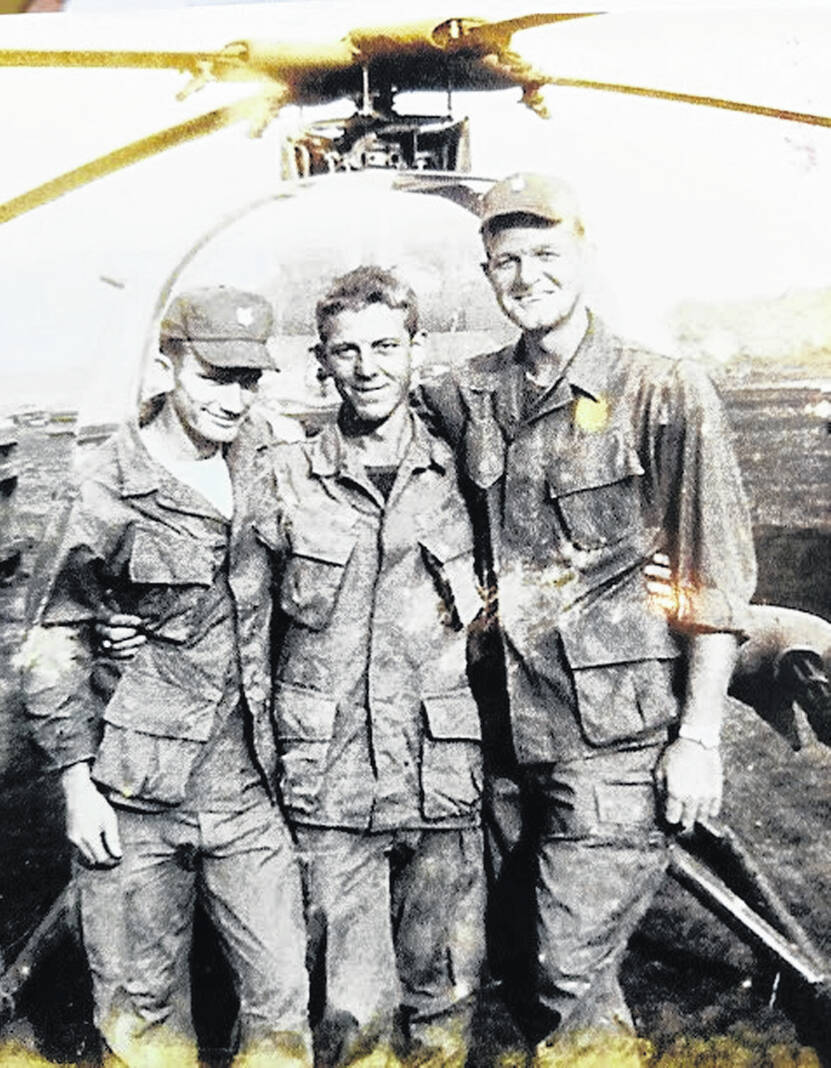

Do you know the name of the first American killed during the American Revolution or the name of the first Clinton County citizen killed in Vietnam? Most Americans won’t know the name Crispus Attucks. The American sailor and stevedore of African and Native American descent who was the first person killed March 5, 1770 during the Boston Massacre and therefore is generally regarded as the first American killed in the American Revolution.
Most local residents won’t remember Private First Class Ralph Howard Livesay, USMC, 3rd Battalion, 3rd Marines whose young life was lost serving his country in Quang Nam Province, South Vietnam on April 15, 1966. His name can be found on the Vietnam Memorial Wall on Panel 6 E, Line 115.
These are just two of the more than 1.3 million American men and women we recognize, honor and thank for their sacrifice each year on Memorial Day. Of course no one expects anyone to remember the name of every Soldier, Sailor, Marine, Airman or Guardsman who has fought and died to secure our many freedoms, but to some, Memorial Day and most every day, is much more personal.
While many will celebrate the holiday with reunions, picnics and swimming pool openings, most American combat veterans know more than just the name of someone who was Killed In Action (KIA) during an armed conflict or war that involved the United States of America; they knew the person and in many instances, witnessed the loss.
Such is that of Wilmington resident, John M. “Jack” Rose II who was a gunner/observer on an OH-6 Cayuse, known as the “Loach” in Vietnam during 1967 and 1968. The following are just a few of those who were KIA, while serving in Vietnam, that Mr. Rose will be remembering on Monday.
Sergeant Henry Jackson, 26 years old from Pineville, Kentucky was a Scout with A Troop, 7th Squadron, 17th Calvary, when, on May 18, 1968, while conducting airborne reconnaissance in Dak To, Vietnam, the Loach in which he was gunner/observer was brought down by enemy fire. Henry was wounded and burned about his lower body and legs and was never able to walk again.
He died in the Cincinnati VA Medical Center as a direct result of these injuries on August 28, 1970. Thanks to the efforts of his Platoon Leader, Colonel Charles Rayl, Henry’s name was added to Vietnam Memorial Wall on Memorial Day 1999 and can be found on Panel 62 E, Line 18.
Chief Warrant Officer Douglas Alexander Walker was the Pilot of the Loach in which Sgt. Jackson was a Scout on that fateful day in May 1968. CWO Walker was shot causing him to lose control of the helicopter and crash. The bird quickly burst into flames. His Wing landed in an effort to rescue the crew, however, he soon came under enemy fire. A Medivac Helicopter was called in to rescue the men, but Walker had been killed on impact.
Walker was born April 29, 1943 in Indian Orchard, Massachusetts and had been in Vietnam since October 1967. Walker’s name appears on the Vietnam Memorial Wall on Panel 63 E, Line 3.
Specialist Five, Ronnie Dean Schultz from Grand Junction, Colorado was a Crew Chief/Door Gunner on a UH-1 Huey, A Troop, 7th Squadron, 17th Cavalry on February 29, 1968 when the helicopter he was in was struck by enemy fire and crashed to the ground, rolling over on its side. The strap that prevented Ronnie from falling out the open door, held him between the ground and the aircraft, crushing the 22-year-old soldier to death.
Jack Rose witnessed the crash and said: “It seemed almost surreal as the crash and rollover appeared to happen in slow motion.” Schultz’s name can be found on the Vietnam Memorial Wall on Panel 42 E, Line 9.
Dale Scott Puishis, Rochester, Washington was trained as a UH-1 Huey Repairman and was a Crew Chief on a Huey attached to A Troop, 7th Squadron, 17th Cavalry on January 22, 1968 when, while on a mission in Pleiku Province, South Vietnam, he was shot and killed just 9 weeks shy of his 20th birthday. He was the only resident of his hometown to be KIA in Vietnam. Puishis’s name can be found on Panel 35 E, Line 11 of the Vietnam Memorial Wall.
Noe Tameyoza, Baytown, Texas, was a Specialist Four and just a few months short of going back to the “World” when he lifted off on a mission to Pleiku Province, South Vietnam. They were flying at treetop height, as the Loach was designed, when he caught an enemy round. His pilot was able to get him to a forward combat hospital unit, but alas the bullet had killed him instantly. Tameyoza’s name is located on Panel W 39, Line 10 of the Vietnam Memorial Wall.
John Thomas O’Donnell, “The Philly Punk”, from Philadelphia, Pennsylvania had only been in Country for two months and a rookie Scout when he was told to take Sgt. John M. “Jack” Rose’s place with the replacement Pilot, Warrant Officer Herbert William Scott III, of St. Petersburg, Florida, to whom Rose had just been assigned after his previous pilot’s rotation back to the States.
The two men took off on a mission to Kontum Province, South Vietnam, where they met with heavy enemy fire. The little Loach was hit, crashed and exploded upon impact. Both men were just 21 years old. O’Donnell’s name can be found on Panel W 57, Line 2 and Scott’s name on Panel W 57, Line 4 of the Vietnam Memorial Wall.
When speaking of the above men, Rose is quick to say: “I’m no hero. These are the real heroes.”
Remember, the men and women we will gather at Sugargrove Cemetery, Blanchester I.O.O.F. Cemetery and thousands of other cemeteries across this great Nation of ours, to honor, were real people. Mostly young men and women with families who loved them and who had their future brought to a tragic close, defending our rights and freedoms. For that reason and that alone, we should thank God for each and every one of them.


